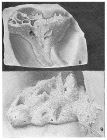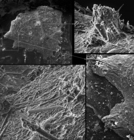RAS taxon details
Diffusilina Heron-Allen & Earland, 1924
397375 (urn:lsid:marinespecies.org:taxname:397375)
accepted
Genus
marine, brackish, fresh, terrestrial
Heron-Allen, E.; Earland, A. (1924). The Foraminifera of Lord Howe Island, South Pacific. <em>Journal of the Linnean Society of London, Zoology.</em> 35(238): 599-647., available online at https://doi.org/10.1111/j.1096-3642.1924.tb00057.x
page(s): p. 614 [details] Available for editors
page(s): p. 614 [details] Available for editors
Hayward, B.W.; Le Coze, F.; Vachard, D.; Gross, O. (2025). World Foraminifera Database. Diffusilina Heron-Allen & Earland, 1924. Accessed through: RAS (Eds.) (2025) Register of Antarctic Species at: https://ras.biodiversity.aq/aphia.php/www.pfeil-verlag.de/04biol/rest/aphia.php?p=taxdetails&id=397375 on 2025-09-12
RAS (Eds.) (2025). Register of Antarctic Species. Diffusilina Heron-Allen & Earland, 1924. Accessed at: https://ras.biodiversity.aq/aphia.php?p=taxdetails&id=397375 on 2025-09-12
Date
action
by
original description
Heron-Allen, E.; Earland, A. (1924). The Foraminifera of Lord Howe Island, South Pacific. <em>Journal of the Linnean Society of London, Zoology.</em> 35(238): 599-647., available online at https://doi.org/10.1111/j.1096-3642.1924.tb00057.x
page(s): p. 614 [details] Available for editors
basis of record Kaminski, M.A. (2004). The Year 2000 Classification of the Agglutinated Foraminifera. In: Bubik, M. & Kaminski, M.A. (eds) Proceedings of the Sixth International Workshop on Agglutinated Foraminifera. <em>Grzybowski Foundation Special Publication.</em> 8: 237-255., available online at http://gf.tmsoc.org/Documents/Library/2000.pdf [details] Available for editors
additional source Loeblich, A. R.; Tappan, H. (1987). Foraminiferal Genera and their Classification. Van Nostrand Reinhold Company, New York. 970pp., available online at https://books.google.pt/books?id=n_BqCQAAQBAJ [details] Available for editors
page(s): p. 614 [details] Available for editors
basis of record Kaminski, M.A. (2004). The Year 2000 Classification of the Agglutinated Foraminifera. In: Bubik, M. & Kaminski, M.A. (eds) Proceedings of the Sixth International Workshop on Agglutinated Foraminifera. <em>Grzybowski Foundation Special Publication.</em> 8: 237-255., available online at http://gf.tmsoc.org/Documents/Library/2000.pdf [details] Available for editors
additional source Loeblich, A. R.; Tappan, H. (1987). Foraminiferal Genera and their Classification. Van Nostrand Reinhold Company, New York. 970pp., available online at https://books.google.pt/books?id=n_BqCQAAQBAJ [details] Available for editors
 Present
Present  Inaccurate
Inaccurate  Introduced: alien
Introduced: alien  Containing type locality
Containing type locality

